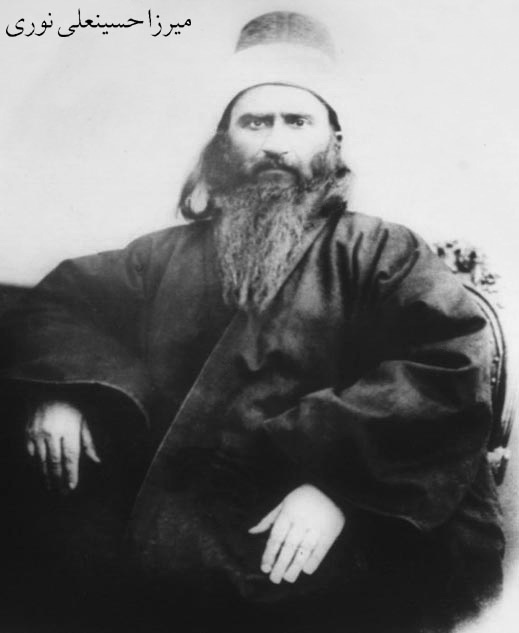Bahai is a “New Religious Movement”
which emerged in the Middle East during the 19th century. It's centered on the
divine messages revealed by Bahaullah (1817-1892), who had originally been a
follower of “the Bab” (1819-1850), a martyred religious reformer in Iran.
Bahaullah, who spent long years in Ottoman exile and virtual imprisonment, was
succeeded as Bahai leader by his son, Abdul-Baha (1844-1921), whose
pronouncements are de facto also regarded as divine revelation by the faithful.
Today, Bahai has branches all over the world, including many Western nations,
due to diligent missionary activity. Most books on the Bahai faith seem to be
written by Bahais, which give them an obviously pro-Bahai slant (or not so
obviously, if you're unaware of the author's affiliation or think a Bahai can
be objective about his chosen religion).
This book, "The Bahai Faith: Its History and Teachings" is something of an exception. William McElwee Miller (1892-1993) was a Christian missionary in Iran who encountered many Bahais and became increasingly skeptical towards them (even apart from not believing in their religion) over time. I think he wrote three books attacking Bahai, this being the second (and most well known) one. The book is intensely loathed by Bahais, since it advances a counter-narrative to their official historiography. After the death of the Bab, his followers split, the majority going with Bahaullah, while a minority supported his half-brother Subh-i-Azal. I think it's obvious that Bahaullah changed the Bab's original religion, from a heterodox and Iran-centered form of Shia Islam to an (at least outwardly) universalist-liberal-modernist world religion. Above all, he claimed that the Bab had only been a precursor to himself. Subh-i-Azal and his followers are sharply condemned by the Bahais, to the point of being seen as almost evil incarnate, and so are later “Covenant-breakers”, suggesting that Bahai might not be as liberal as claimed. McElwee Miller has decided to tell the story from the viewpoint of the Azalis and other Covenant-breakers, including Mirza Muhammad Ali and Ibrahim George Kheiralla. Unsurprisingly, it's not a pretty story. Since both sides probably practiced their fair share of protective dissimulation (hardly surprising, given circumstances in the Ottoman Empire at the time), the full truth might never be known – or maybe it actually is the story told in this book! For the record, I only read about half of it, since the number of free pages available on the web is limited.
Several things stand out. One is that the Bab's original message, as recorded in his scripture Bayan, was…well, strange! His obsession with the esoteric significance of the number 19 is particularly noteworthy. Another is the militant millenarianism, which led to open warfare between Babis and Iranian royal troops. Both the Bab and Bahaullah de facto claimed divine or quasi-divine status. Not only were they imams or major prophets, they were (at least in secret) seen as direct manifestations of God himself. It's not entirely obvious whether they were incarnations á la Jesus or some kind of Gnostic redeemers with illusory bodies á la Ali in Alawite theology. Abdul-Baha, while not being divine sensu stricto, nevertheless claimed infallibility and was hence part of God's manifestation by extension. Protective dissimulation (taqiyya) was widely practiced by Bahais, many passing as Shia or Sunni Muslims to avoid persecution. While not “wrong”, this obviously raises question about whether the public writings of this group can really be trusted. In the West, Bahai attracted Unitarians, Universalists and other ultra-liberal Christians, while the Iranian membership seems to have been much closer to Islam as traditionally practiced (including polygamy, etc).
Bahai seems to have been to a large extent a family affair. Bahaullah and Subh-i-Azal were brothers, Abdul-Baha was Bahaullah's son, and so was his main factional opponent within the movement, Mirza Muhammad Ali. Indeed, it seems that Abdul-Baha eventually excommunicated most of his family! Nor was the movement particularly peaceful. According to McElwee Miller, at least 20 Azalis were murdered by Bahais during the factional struggle, while Bahaullah tried to poison Subh-i-Azal. Already before the Azali-Bahai split, dissident “prophets” who claimed new revelations had been disposed of the hard way. The Bahais, for their part, claim that it was Subh-i-Azal who tried to poison Bahaullah, and that the schismatic groups acted as informers for the Ottoman authorities. At least in the first part of the book, the author strongly implies some kind of political conundrums, but he never elaborates. The Bahaullah faction seems to have had good relations with the British and the Russians (the two colonial powers trying to dominate Iran), while the Azalis supported the nationalist Constitutional Revolution.
I used to think that the Bahai faith was a remarkably tolerant and liberal one, but the more I read about this group (including in pro-Bahai books), the more it seems that we're dealing with just another absurd cult having one message for the general public, and quite another one internally. Like all cults, Bahai has to change its history to make it conform to whatever is revised standard orthodoxy at the moment. Bahais charge that the documents used by McElwee Miller (which are older than Bahai official histories) are later Azali forgeries, and that the Bahai hagiographies are the real “primary sources”. Nice try, brothers.

No comments:
Post a Comment